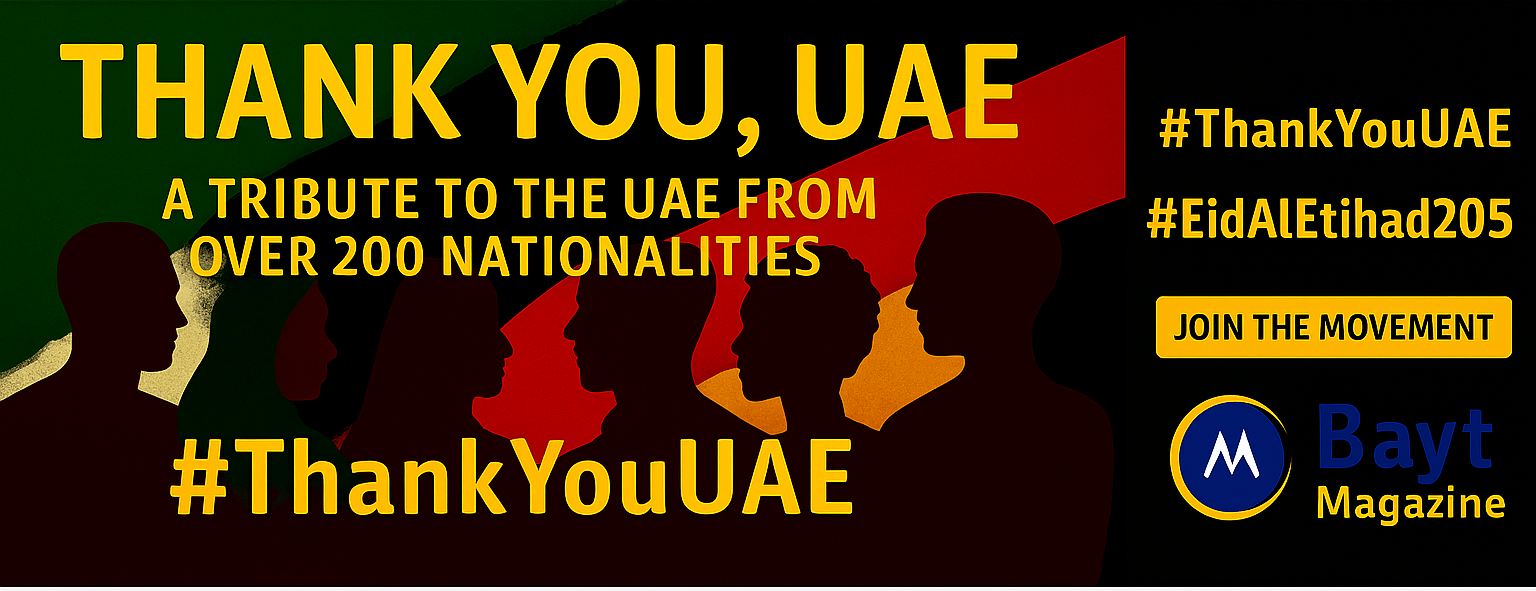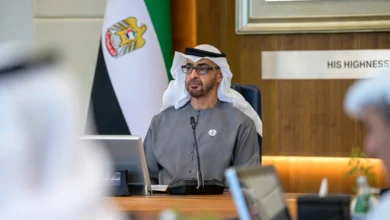
Gulf States vs Iran: Hidden Truths Behind Regional Tensions
The Persian Gulf contains two-thirds of the world’s proven oil reserves. Saudi Arabia and Iran stand out as the region’s powerhouses. Saudi Arabia dominates oil production, but Iran’s population of 80.8 million surpasses all seven Gulf states combined. This creates a fascinating power balance in the region.
Recent diplomatic progress has brought some positive changes. The restoration of Iran-Saudi Arabia relations in 2023 marks a significant shift, though underlying tensions still affect regional politics. These Middle Eastern giants have seen their relationship transform from subtle rivalry to intricate engagement since Iran’s 1979 revolution. Both nations now compete for influence across multiple battlegrounds, from Yemen to Syria.
Their relationship carries global importance. Two-fifths of the world’s traded oil flows through the Straits of Hormuz, which Iran and Oman jointly watch over. This mix of cooperation and competition raises a crucial question: Will Iran and the Gulf States build stronger alliances, or will their deep-rooted rivalry continue to shape their future?
Historical Evolution of Iran-Gulf States Tensions
The relationship between Iran and Gulf states has swung between partnership and rivalry throughout modern history. Their complex ties stem from different ideologies, regional ambitions, and calculations made by both local and global powers.
Pre-1979 Relations: The Twin Pillars Policy
The United States put its “Twin Pillars” strategy in place before the Iranian Revolution. This strategy relied on Iran first and Saudi Arabia second to keep the region stable. Tehran and Riyadh kept friendly diplomatic connections during this time, though some tension existed. Both countries worked together as monarchies under US strategy, but Iran’s growing regional power and oil price disputes created friction between these two nations.
Saudi Arabia worried about the Shah’s dream to make Iran the region’s strongest military force. Border disputes and shared oil field issues from the 1950s made things more difficult. Iran’s takeover of three Emirati islands in 1971 and its claims on Bahrain (which the Shah wanted as Iran’s 14th province) added to regional concerns.
Impact of the 1979 Iranian Revolution
The 1979 Islamic Revolution changed the Middle East’s political map completely. Ayatollah Khomeini’s revolutionary government stood against both Western and Eastern powers with its motto “neither East nor West.” Saudi Arabia and other Gulf monarchies saw this revolution as a threat to their power, especially since Tehran tried to spread its revolutionary ideas.
Bahrain, Kuwait, Oman, Qatar, Saudi Arabia, and the UAE created the Gulf Cooperation Council (GCC) in 1981 to protect themselves. Things got worse after Iranian pilgrims protested during the hajj. These protests led to violent clashes in 1987 that killed about 400 people. People later attacked the Saudi embassy in Tehran, which made Riyadh cut diplomatic ties in 1988.
The Iran-Iraq War and Gulf States’ Positioning
Most Gulf states backed Baghdad after Iraq invaded Iran in September 1980. Saudi Arabia and Kuwait gave Saddam Hussein’s war effort huge financial support, reaching AED 146.88 billion. They thought an Iraqi win would stop Iran’s revolutionary threat.
The eight-year conflict killed at least half a million people. Gulf monarchies played a careful balancing game during this time. They publicly supported Iraq, but some states—mostly in the lower Gulf—stayed careful in dealing with Iran. Each state acted differently based on its risks and business interests.
The war ended in 1988 with both armies basically where they started. This long conflict deeply changed regional relationships. Iran built up its own military strength, including missile production, because other countries isolated it during the war. The feeling that Arab neighbors betrayed Iran created trust issues that still shape Tehran’s strategy today.
Military Capabilities and Security Dynamics in the Persian Gulf
The military balance between Iran and Gulf states shapes the Middle East’s geopolitical map in 2024. Their contrasting capabilities, strategies, and investments mirror the deeper regional tensions that keep evolving.
Iran’s Military Strategy and Capabilities
Iran uses a mixed warfare approach that blends conventional and unconventional elements. The Islamic Revolutionary Guard Corps (IRGC) pioneers Tehran’s military doctrine and works with regular Artesh forces. Iran’s military strategy aims to deter and retaliate rather than launch offensive operations. The country has built three core capabilities: ballistic missiles, naval forces that threaten Persian Gulf navigation, and unconventional warfare through proxies.
The IRGC Navy owns thousands of sea mines, shore batteries, heavily armed speedboats, and midget submarines. These assets help control the Strait of Hormuz. The IRGCN sees minelaying as its critical mission and uses rockets and ballistic missiles with dispensing warheads in the southern Gulf’s shallow waters.
Gulf States’ Defense Spending and Modernization
Gulf states spent between AED 348.83 to AED 470.01 billion on military forces in 2017—dwarfing Iran’s AED 55.08 to AED 58.75 billion by six to nine times. This spending gap hasn’t changed for decades. Iraq, Oman, and Saudi Arabia each invest more than 10% of their GDP in defense.
Gulf-state naval assets grew from 512 to 621 vessels between 2014 and 2022. Saudi Arabia and Qatar bought the most ships, while Kuwait and Bahrain acquired the least. The UAE chose a practical path by focusing on corvettes instead of frigates based on operational needs.
Maritime Security in Contested Waters
The Strait of Hormuz handles one-fifth of the world’s oil supply and remains a critical flashpoint. US Naval Forces Central Command reports that “Iran has harassed, attacked or seized nearly 20 internationally flagged merchant vessels” since 2021. Several multinational naval missions patrol the region, including the US-led International Maritime Security Construct, European-led Emasoh, Task Force 59, and CTF-153.
Missile Defense Systems and Air Superiority
Missile defense capabilities vary greatly across the region. Israel has developed effective layered defenses, but Arab Gulf states mostly depend on Patriot systems and limited surface-to-air missiles. Qatar, Saudi Arabia, and the UAE have THAAD systems, while Iraq, Oman, and Bahrain lack basic Patriot defenses.
The battle for air superiority continues as experts question whether complete dominance works against modern air defenses. This reality has pushed forces to improve capabilities that support joint operations in contested airspace instead of seeking total air control.
Proxy Conflicts Across the Middle East
“The region needs the resumption of normal ties between its countries for the Islamic nation to reclaim its lost security as a result of foreign interference.” — Mohammed Abdulsalam, Chief Negotiator of Yemen’s Iran-backed Houthi Movement
The Middle East has evolved into a chessboard where Iran and Gulf states—especially Saudi Arabia—wage their battles through proxies. These indirect conflicts offer a cheaper way to achieve regional goals without direct military confrontation.
Yemen: Battleground for Regional Influence
The Yemeni civil war shows this proxy warfare at its peak. Iran supplies the Houthis with ballistic missiles, drone technology, and sea mines. These weapons pose a threat to ships passing through the Bab el-Mandeb Strait—a crucial route for global oil transport. The UN found that Houthis used missiles based on Iran’s Qiam-1 model to attack Saudi targets. Saudi Arabia responded with a naval blockade in 2015 and launched Operation Decisive Storm that led to over 25,000 air strikes. The Houthis joined the war after the October 2023 Hamas-Israel conflict and started attacking ships in the Red Sea and Gulf of Aden.
Syria and Lebanon: Competing Interests
Iran’s “forward-defense” strategy aims to stop threats before they reach Iranian soil. Syria and Lebanon play vital roles in this plan. Tehran has placed about 3,000 IRGC-QF personnel in Syria to back the Assad regime and provided billions in financial support. This presence helps Iran reach the Mediterranean and maintain its connection with Hezbollah. Hezbollah stands as Iran’s most valuable proxy investment in Lebanon. The group trains fighters and leads other Iranian-backed militias throughout Syria. Since the October 2023 escalation, Hezbollah has fought its fiercest battles with Israel since 2006.
Iraq: Contested Sphere of Influence
Iran’s influence in Iraq grew after the 2003 US invasion through political, economic, and security ties. The relationship goes beyond simple support and control. Iranian-backed groups attack US forces in Iraq but now act more independently—especially since the deaths of Qassem Suleimani and Abu Mahdi al-Muhandis. Iraq helps Iran bypass sanctions through economic channels. The country also tries to bridge gaps between Iran and Gulf states as it balances regional powers.
Bahrain: Sectarian Tensions and External Interference
Bahrain’s Shia majority lives under Sunni rule, where sectarianism serves as a political tool. The 2011 Arab Spring started as a united, democratic movement. The government branded it as an Iranian-backed Shia uprising to justify the GCC military intervention led by Saudi Arabia. Iran picked up on this narrative by giving media support to protesters without direct action. Analysts call this the “new Middle East cold war,” where leaders use sectarian differences to achieve political goals rather than fight over religious beliefs.
Economic Warfare and Energy Competition
Economic competition between Iran and Gulf states centers on energy resources that drive their national economies. Their rivalry shows through oil policies, responses to international pressure, and control of key maritime trade routes.
Oil Market Strategies and OPEC Politics
Iran and Saudi Arabia follow different oil strategies based on their economic needs. Iran’s oil policy aims to maximize short-term gains and immediate price increases to keep its fiscal health strong and create jobs. Saudi Arabia, on the other hand, looks at long-term market stability and strategic positioning. This difference creates ongoing tension within OPEC as both countries try to gain influence.
The oil rivalry between Saudi Arabia and Iran has deep roots. Saudi Arabia flooded international markets with oil in 1985-1986 during the Iran-Iraq war. This move forced prices down and cut Iran’s oil revenues drastically. Even with the diplomatic improvements in 2023, both countries continue to push competing visions for regional energy markets.
Impact of International Sanctions on Iran
International sanctions have crippled Iran’s economic potential. The International Monetary Fund found that Iran’s economy shrank 15-20% more than it would have without tough sanctions. This led to losses of AED 587.51 billion in oil revenue alone. Iranian assets worth more than AED 367.19 billion remain frozen in accounts outside the country.
Trade between Iran and Gulf Cooperation Council states grew rapidly at first. GCC exports to Iran rose from AED 4.77 billion in 2000 to AED 49.20 billion in 2008. US-led sanctions changed this trend when they pushed GCC states to cut back economic ties with Tehran. The UAE leads GCC members in Iranian trade, making up about 50% of Iran-GCC commerce.
Trade Routes and Maritime Chokepoints
The Strait of Hormuz and the Strait of Malacca are crucial pressure points in the Iran-Gulf rivalry. Iran and Oman border the Strait of Hormuz, which handles about 17 million barrels of oil daily—35% of all seaborne oil exports. Kuwait, Qatar, and Iraq depend entirely on this passage as all their crude exports move through it.
The Strait of Malacca serves as a key route for East Asian energy markets, moving about 15 million barrels of oil each day. Any problems at these chokepoints would trigger changes in global energy prices and affect both Iran’s and Gulf states’ economies.
External Powers Shaping Iran-Gulf States Relations
“Further regional instability is not in Saudi or Iranian interest at the moment.” — Kristian Coates Ulrichsen, Political Scientist at Rice University’s Baker Institute in the United States
External powers have shaped the complex relationship between Iran and the Gulf states. This has created a multi-layered geopolitical map that goes beyond regional rivalries.
US Security Guarantees to Gulf States
The Gulf states depend heavily on Washington as their main security guarantor. Most GCC countries have American military bases and rely on the United States for arms. This security structure took shape during the Iran-Iraq war and expanded after Iraq invaded Kuwait in 1990. The US now operates bases in Bahrain (home of the US Fifth Fleet), Qatar (home of the US Central Command’s forward headquarters), the UAE, Kuwait, and Oman.
All the same, this relationship has changed with US priorities. The Biden administration decided in 2021 to stop supporting Saudi-led offensive operations in Yemen. This put immediate pressure on Riyadh to change its approach and look for negotiated solutions. The Gulf states have started asking for more formal security arrangements with Washington. They see current commitments as too “informal”.
China’s Growing Influence and Mediation Role
Beijing has emerged as an alternative intervener in regional conflicts. China showed this by helping broker the 2023 Saudi-Iran diplomatic reconciliation. This success marked China’s first high-profile achievement in resolving conflicts between major regional rivals. Both countries agreed to appoint ambassadors again and revive cooperation agreements from 1998.
Chinese leaders have interpreted non-interference flexibly to protect their interests in conflict regions. They act mainly as facilitators and create space for dialog without getting involved in political details.
Russia’s Strategic Calculations in the Region
Moscow balances carefully between Iran and the Gulf states. Russia and Iran have built a “strategic partnership” through military cooperation in Syria and Ukraine. At the same time, economic needs have pushed Russia toward closer GCC relations.
The Gulf’s economic power has become crucial to Russia’s economy during the Ukraine crisis. OPEC+ production cuts in 2022-2023 helped Russian interests by keeping global oil prices high. Yet Russia’s competing relationships sometimes create tension. This happened when Moscow backed UAE’s position in the Tunb islands dispute, which led Iran to summon the Russian ambassador in protest.
Comparison Table
| Aspect | Iran | Gulf States |
|---|---|---|
| Population | 80.8 million | Less than Iran’s population (combined) |
| Military Spending (2017) | AED 55.08-58.75 billion | AED 348.83-470.01 billion (combined) |
| Naval Assets (2014-2022) | Thousands of sea mines, shore batteries, speedboats, midget submarines | Grew from 512 to 621 vessels |
| Key Military Force | Islamic Revolutionary Guard Corps (IRGC) | Regular military forces with Western equipment |
| Military Strategy | Hybrid warfare, deterrence, ability to retaliate | Standard warfare, focus on modernization |
| Missile Defense | Local missile program | Uses Patriot systems and THAAD (Qatar, Saudi Arabia, UAE) |
| Key Proxy Forces | Houthis (Yemen), Hezbollah (Lebanon), Iraqi militias | Allied groups in Yemen, Syria |
| Maritime Control | Guards northern Strait of Hormuz | Oversees southern Gulf waters |
| International Alliances | Works closely with Russia, China | Strong US ties, hosts US military bases |
| Economic Effects of Sanctions | Lost ~AED 587.51 billion in oil revenue, AED 367.19 billion in frozen assets | No major international sanctions |
| Oil Strategy | Seeks quick gains and immediate price increases | Aims for market stability long-term (Saudi-led) |
| Regional Trade Position | Limited by sanctions, UAE handles 50% of Iran-GCC trade | Strong global trade networks |
The relationship between Iran and Gulf states shows a delicate balance of rivalry and careful cooperation. Their complex ties stem from years of tension, military differences, and economic competition. Recent diplomatic progress points to possible strategic collaborations, despite their troubled past.
Military power tells an interesting story. Gulf states spend more money and have better Western weapons. Iran takes a different approach. It relies on unconventional warfare and works through allied groups. Both sides compete in the energy sector, especially oil markets, which reflects their different priorities. Sanctions have held back Iran’s economy. Yet Tehran holds power through its control of key shipping routes.
Outside players shape these regional ties deeply. Saudi Arabia and its Gulf neighbors stay close to the United States for security. Iran has built stronger bonds with China and Russia instead. China proved its growing influence by helping Iran and Saudi Arabia restore diplomatic ties in 2023. This marks a big change in how power works in the region.
Looking ahead, Iran and Gulf states will likely keep their mix of competition and partnership. These regional powers need to work together practically because of strategic needs, economic factors, and global changes. They still disagree on ideology and politics. Their success in balancing rivalry with teamwork will affect regional stability and global energy security over the next several years.




